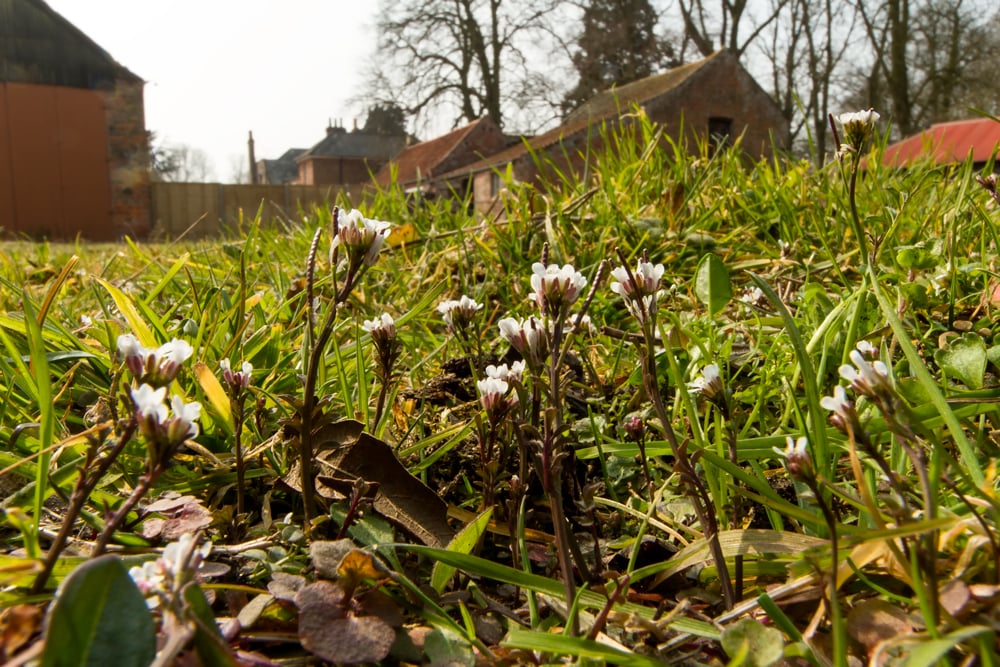Description
Hairy Bitter-cress is a small, winter annual member of the cabbage family. It has a basal rosette of dark green, pinnate leaves and a short stem topped with small white flowers which develop into long, narrow pods. Flowering can occur from early February until late November but reaches its peak in April. Hairy bitter-cress is most likely to be confused with the closely related wavy bitter-cress which, in general, is taller, has a more ‘luxurious’ appearance and a wavy stem. However you can get short wavy bitter-cresses and wavy stemmed hairy bitter-cresses so to be sure one needs to count the number of stamens in the flower; four in this species but six in wavy bitter-cress. Hairy bitter-cress is sometimes known as lamb’s cress, land cress, or spring cress.
Habitat Information
Hairy bitter-cress is a native winter-annual (or occasional summer annual) which favours well drained sandy or calcareous soils that are subject to summer drought. It is a very common weed of cultivated land and other ruderal habitats particularly those sprayed by herbicides in high summer. Hairy bitter-cress can be used in roof mixtures to provide some winter and early spring cover following and very dry summer and it can also be grown to eat as it has a peppery (but not bitter) taste, a bit like water-cress.
Growing Information
Best sown in autumn but can be sown at any time of the year.


